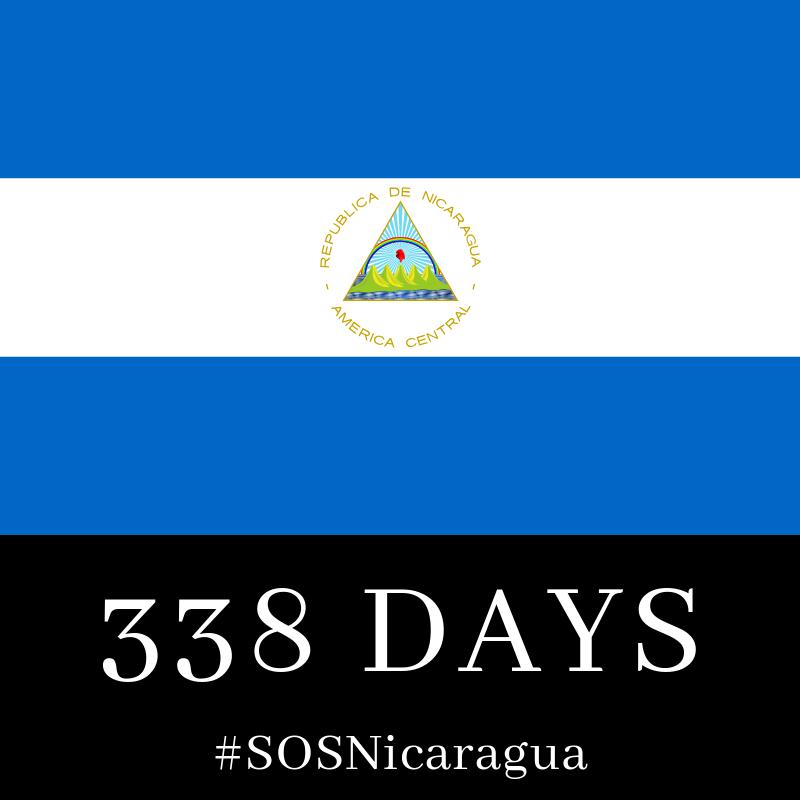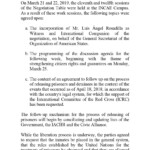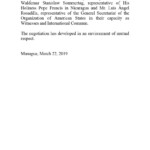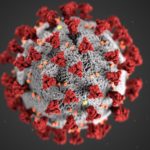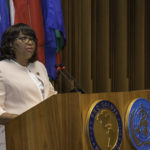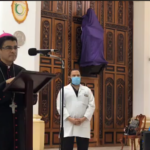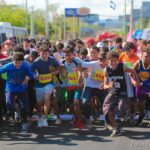The Unidad Nacional Azul y Blanco (UNAB) has been encouraging various forms of protest, after staging #ALaCalle, Nicaragua’s first march since October.
On Wednesday, UNAB asked Nicaraguans to join the “pitazo nacional” and the “cacerolazo nacional,” by honking their car horns and banging on pots and pans at 6 pm.
Por la liberación de las presas y presos políticos ¡Pitazo Nacional!
Hoy Miércoles 20 de marzo
6 pm#UnidadNacional #ALaCalle pic.twitter.com/RSe0jjtkHy— Unidad Nacional Azul y Blanco (@UnidadNic) March 20, 2019
Nuestro compromiso es con Nicaragua, resistimos desde donde podemos.
Cacerolazo Nacional
¡Que todo el mundo nos escuche!
Miércoles 20
6:00 pm#UnidadNacional #ALaCalle pic.twitter.com/mqiUs3YKBC— Unidad Nacional Azul y Blanco (@UnidadNic) March 20, 2019
Many Nicaraguans joined in the cacophony of protest.
Seguiremos en la calle, por nuestros derechos y la libertad de todos las presos y presos políticos.
¡Así estuvo el Pitazo! 👇🏼#UnidadNacional #ALaCalle pic.twitter.com/cvZYgsk0fN
— Unidad Nacional Azul y Blanco (@UnidadNic) March 21, 2019
Tomorrow, UNAB is calling for another kind of protest, the piquete express. Public picketing anywhere and everywhere. UNAB even published a handy guide for picketing, via social media. It includes instructions like “gather a group of neighbors or friends, pick a well-frequented spot, plan your entry and exit route, ensure transportation, pick someone to film and photograph, and write a short statement describing the reason for your picket, and read it or print it on a sign.
Express picketing will take place this Saturday, from 2 pm to 4 pm, Managua time.
On other news, the Alianza Civica and the OrMu negotiators made some headway today at the INCAE, according to “Comunique Number 8”, released this afternoon. OAS envoy, Luis Angel Rosadilla has been officially accepted by both sides as “witness and international companion”. In addition, the negotiators announced that the process for the release of political prisoners will begin by “conciliating and updating lists” from the government, the IACHR, and the Alianza.
Both parties agreed to “request that the inmates be placed in the general system”, a request that was widely misinterpreted as meaning that the prisoners would be moved to general population and/or reclassified as common criminals. Azahalea Solis, from the Alianza, explained that placing someone in “the general system” simply means that prisoners will no longer be in maximum security.
Régimen común: quiere decir que no es de máxima seguridad. No significa que van con reos comunes.
— Azahalea Solis (@AzahaleaSolis) March 22, 2019
Being placed in the general system means that prisoners like Miguel Mora would now be entitled to the same privileges of regular inmates, including regularly scheduled time on the yard so that they can see the sunlight.
In January, when the delegation from the European parliament visited El Chipote, MEP Jose Inacio Faria commented on the conditions that journalist Miguel Mora was being held in. Faria told Wilfredo Miranda of Confidencial that, “During the visit, we asked the prison’s director to take Miguel Mora out into the sunlight. He needs sunlight, vitamin D. He’s almost blind from being in the dark. The conditions in El Chipote are subhuman — they’re inadequate for raising pigs. The pigs in my county are raised in better sites than that cell. It’s unacceptable and shameful.“
Being placed in the general system also means that inmates like Medardo Mairena, Yubrank Suazo, Edwin Carcache, and Christian Fajardo could be moved out of the maximum security wing of La Modelo, the infamous Galeria 300. Being placed in the general system also
In 2015, La Prensa published an expose of the Galeria 300, based solely on third-party accounts from family members of inmates housed inside. At the time, reporter Elizabeth Romero described this wing of La Modelo as “warehouses where inmates do their time”
According to La Prensa’s reporting, the 300 is a fairly recent addition to the Modelo, as it was built and commissioned in 2014. However, the conditions described then, which have been corroborated by several political prisoner testimonies, are inhumane.
The OrMu administration stated via letter to Luis Almagro that it would “continue and conclude with the excarcelation of prisoners, including the release of all people that the Interamerican Commission on Human Rights has identified as political prisoners.”
Both negotiation teams also agreed to “request […] that the rules established by the United Nations for the treatment of prisoners be observed and that they are allowed visits in special situations and emergency.”
As to who is in charge of granting those requests, a fair assumption is that it would be Ortega himself, or, in his stead, the task would fall onto Interior Minister Maria Amelia Coronel Kinloch, as the prison system is directly under her purview.
The safety and well-being of political prisoners inside Ortega and Murillo’s penitentiaries is anything but certain, as all Nicaraguans have to go on is the word of an administration that has amassed a dismal record on human rights and with truth telling.
